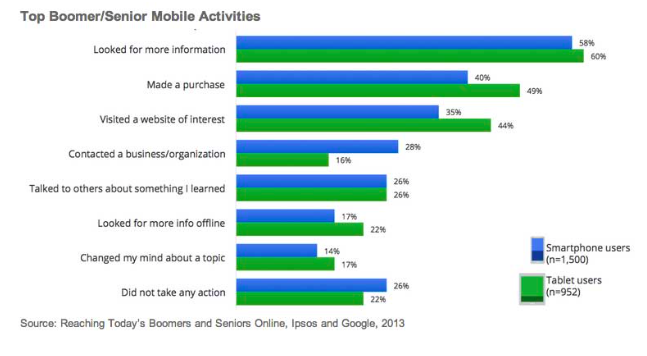In today’s marketing world, segmentation is essential, and one of the clearest divides that shape how consumers shop is their age. While many organizations focus almost exclusively on marketing to millennials – that lucrative crop of young people currently in the 18-34 age demographic – there are strong arguments to be made for marketing to their parents and even their grandparents too.
After all, free from mortgages, young families and student loans, Baby Boomers are the most likely to have spare cash to spend. Generational marketing is key to maximizing the impact of multi-channel campaigns.
Your range of products will naturally shape the types of campaigns you release – denture adhesive will always be marketed at older generations while tickets to the hottest new nightclub in town will generally favor the young – but if you’ve got a less polarized product to bring to market, it’s worth bearing the following tips in mind for marketing to different generations.
Influencer Marketing can impact everyone
It’s long been taken for granted that a gushing recommendation by a friend or family member is a more powerful motivator to try a new product than an advertisement. But what if that gushing recommendation came from someone you know and respect online rather than a personal friend? Enter Influencer Marketing.
You’ve been following a particular blogger for months because you share a common interest – it could be fashion, sport, travel or something more obscure. One day, they recommend a product, and because you trust them, you buy it – you get an awesome new product and the blogger gets a small affiliate fee. This is the principle behind Influencer Marketing.
Initially, Influencer Marketing was primarily seen as a new way of reaching millennials, but research suggests that older generations are also likely to complete purchases based on recommendations from influencers.
So, what’s the difference between Influencer Marketing to younger and older generations? While younger generations are happy to take recommendations from anyone they admire who has built up an audience, older audiences tend to need an extra layer of trust, which may mean that they look to influencers who were established in their respective fields prior to the advent of Influencer Marketing, such as celebrities, athletes or women. Older generations are also more likely to be convinced by case studies and ‘before and after’ features, and influencers can play a part here.
Check out this generational marketing infographic from QuickSprout.

Get visual
As the video begins to dominate on Facebook, Pinterest users obsessively create boards for all kinds of marketable niches, and Instagram continues to grow at an unstoppable pace, it’s never been more important to get visual.
Millennials love video content, SnapChat has 100 million monthly users and 53% of internet users aged 18-29 use Instagram. But it’s not all about millennials – according to Fortune, Generation X actually spends more time each week on social media than millennials and they’re equally tech-savvy. Baby Boomers are catching up too, with up to 20 hours a week spent on social media sites.
To appeal to these audiences, skip the stock images and create compelling, original visuals. These days, creating a video doesn’t necessarily mean hiring a videographer and booking a few days in the studio – all you need is an iPhone, a tripod and a decent microphone to get started. If you’re trying to get a lot of information across, use infographics – they make large quantities of data easy to read, understand and share.
Combine traditional and digital strategies for maximum coverage
Very few consumers are ready to make a purchase after a single marketing interaction or activity; to achieve success it’s important to reach your audiences in a variety of ways. A great way of doing this is combining more traditional methods of marketing like newsletters, discount coupons and face-to-face interaction with the more digital methods we have discussed above.
Older consumers appreciate the familiarity of these tried and tested methods, and tend to place more trust in a document they can hold and rifle through, while younger generations enjoy the novelty of receiving mail – especially when it’s not about bills!
It’s worth noting that many people who fit what is traditionally seen as an older demographic don’t see themselves that way. According to Adweek, many of the ‘older’ cohort feel 10-19 years younger than their chronological age and don’t feel old. That means that whether you’re choosing digital or traditional messaging to reach them, it’s essential to emphasize vibrancy and vitality.
Final thoughts
Segmenting your audiences into different generational marketing personas is a useful way of figuring out which of your campaigns will work best for your products or services, and deciding which tools and tactics you will use.
While millennials are a core demographic for most businesses, it’s vital not to neglect older audiences who may be just as engaged but are currently underserved in the market. This could be a costly mistake for many businesses since Gen X and Baby Boomers are likely to have more money to spend than debt-ridden millennials.




1 Comment
Johnathan Weberg · February 13, 2018 at 1:53 pm
You mentioned very quickly the difference between the younger and older generation, couldn’t agree more on that point! The younger generation, in which I’m in…Is always looking for the golden nugget and the gravy, and is readily going to follow almost anyone. While the older generation, is more thorough and thoughtful….Thanks again!